8 Small Trees For Front Yards – Boost Curb Appeal Without Dominating The House
Discover the best small trees for front yards, which make an impact in multiple seasons without overshadowing the rest of the yard.
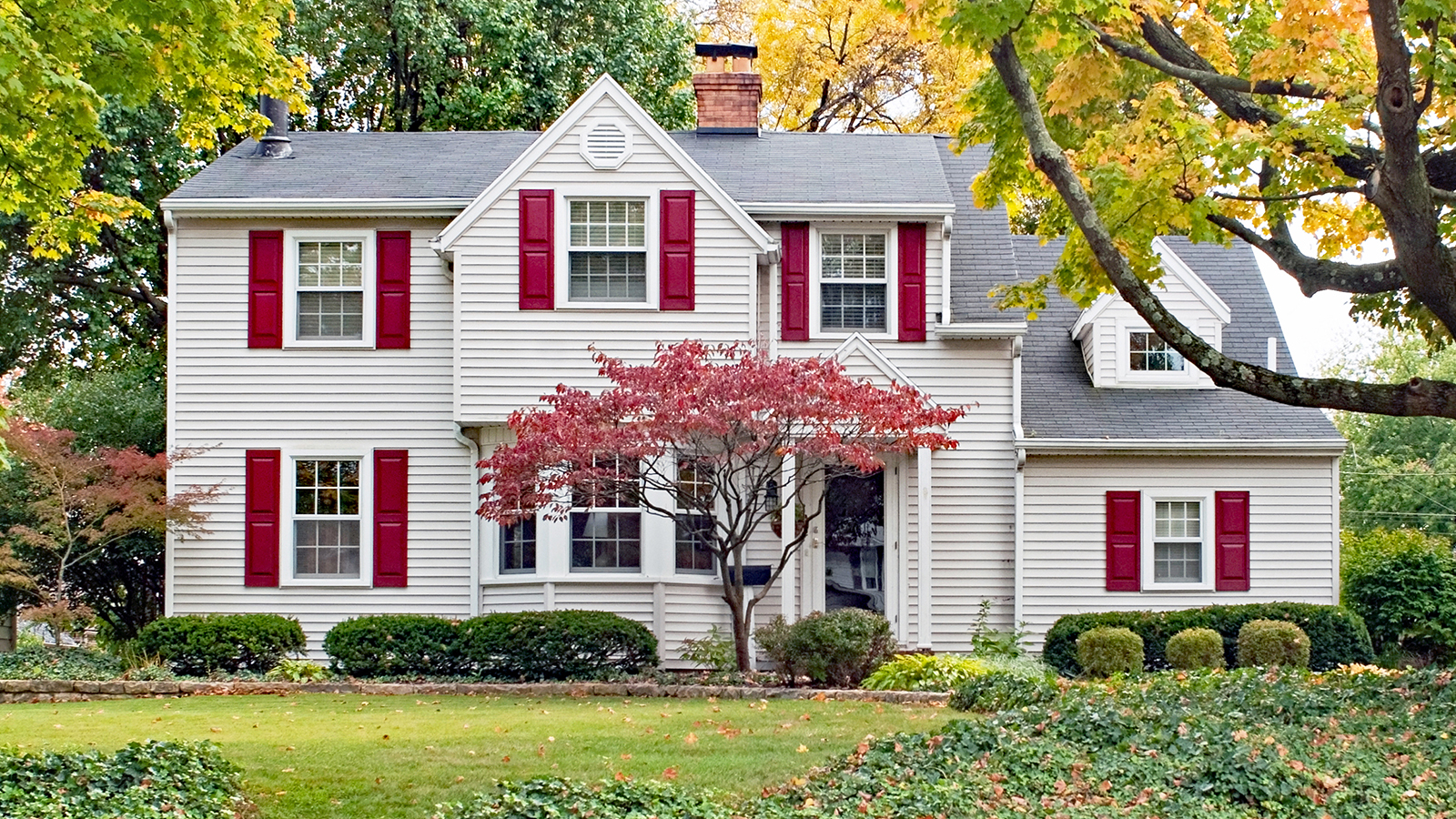

Landscaping is a crucial element of curb appeal, providing an attractive variety of colors, textures, and natural beauty. Good landscaping in the front of the home can even boost your house’s value.
Small trees are excellent additions to small front yard landscaping ideas as they help improve curb appeal without hiding the house itself. However, compact trees work in yards of all sizes, allowing for a mix of different trees that complement the street scene.
What to Consider When Choosing Small Landscaping Trees
The best small trees for front yards should form an attrative landscaping feature without overwhelming or dominating the house. Consider several factors as you select the right ornamental tree for your front yard:
Size. Know how big a tree will grow so you can be sure it won’t hide attractive features of your home or become a problem in several years.
Growing Conditions. Choose a tree that is suited to your USDA hardiness zone and that will grow well in the conditions available, including soil type and sunlight.
Maintenance. Some small ornamental trees require a lot of maintenance. If you don’t think you’ll be able to keep up, look for a type that requires less care.
Seasonal Appeal. Curb appeal is year-round, so consider four-season trees with interesting features in every month. This could include spring flowers, fall foliage color, or trees with berries or interesting bark for winter interest.
Gardening tips, videos, info and more delivered right to your inbox!
Sign up for the Gardening Know How newsletter today and receive a free copy of our e-book "How to Grow Delicious Tomatoes".
With these factors in mind, you should be able to choose trees that add value to your property – rather than trees that devalue your home.
Discover ideas for attractive small trees that boost curb appeal when used in front yard landscaping.
1. Crabapple

Crabapple trees (Malus spp.) are always popular in landscaping, primarily for their spectacular shows of spring flowers in white or shades of pink. They are some of the best fruit trees for front yards, so you can choose from among many different species and varieties to suit your particular needs. Look for disease-resistant types for the best results.
Crabapples are suitable for hardiness zones 4 through 8 and grow between 6 and 30 feet (2-9m) tall and wide depending on the type.
In addition to spring blooms, they offer fall color and fruits, although the latter can be messy and require regular cleanup.
2. Flowering Dogwood
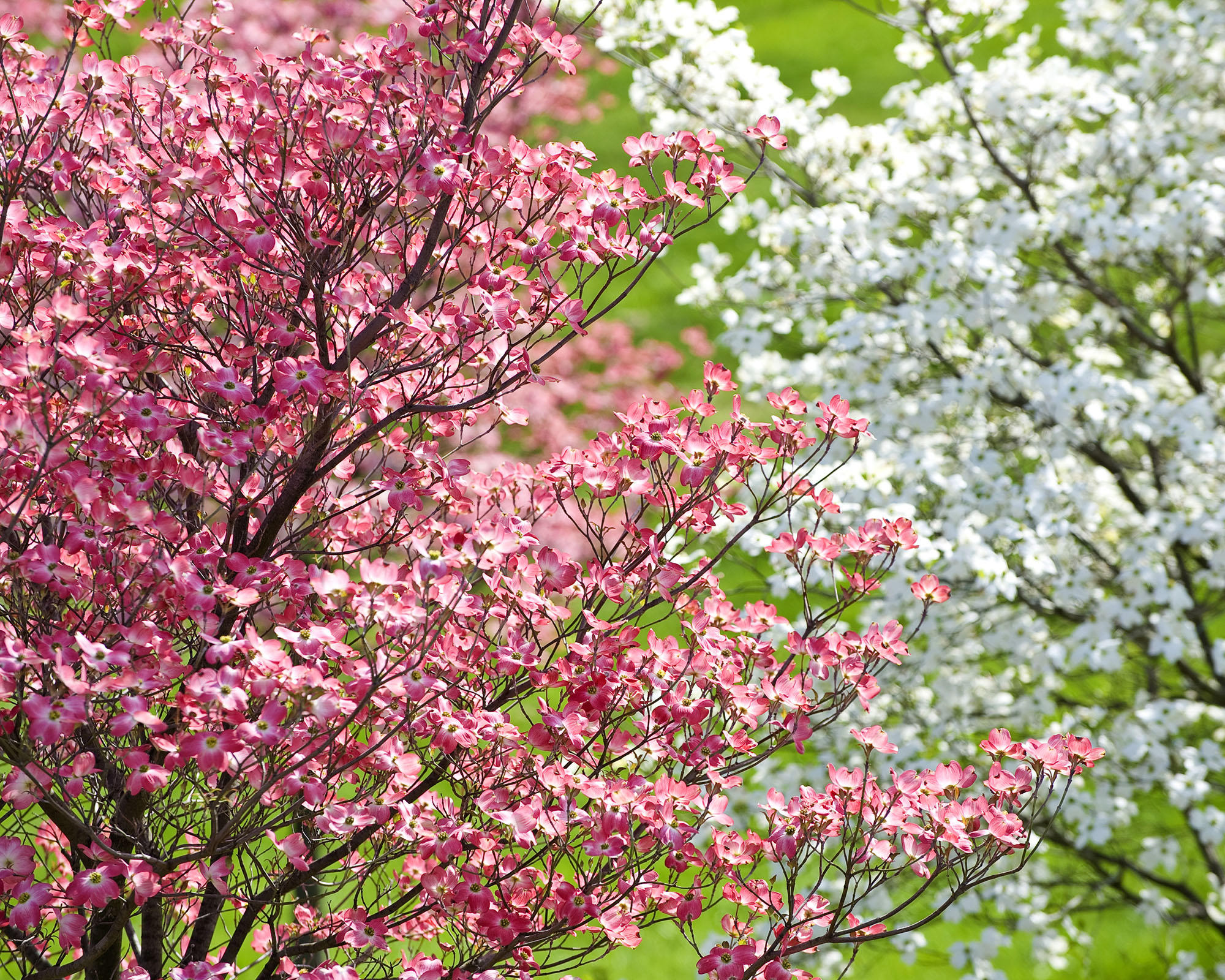
Flowering dogwood (Cornus florida) is a North American native that produces pretty flowers in spring and berries that feed local wildlife. They also have excellent fall color. Trees can grow up to 30 feet (9m) tall and wide and are hardy in zones 5 through 8.
Flowering dogwood is a good option for an area with a little shade. These forest trees like full sun but can also tolerate partial shade. Look for varieties with unique features, like ‘Cloud Nine’ with extra large flowers and ‘Cherokee Sunset’ with variegated leaves.
3. Redbud
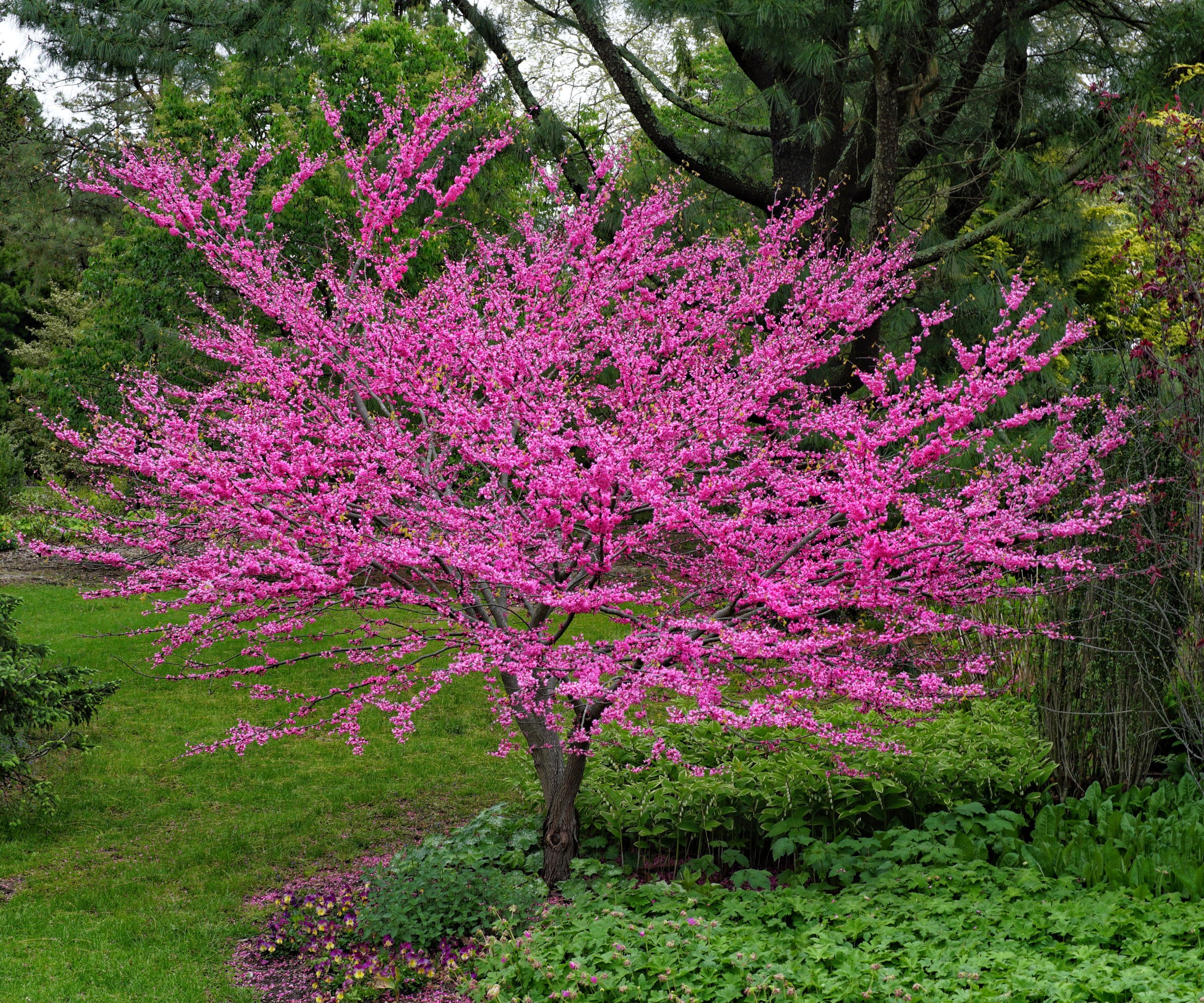
Another excellent option for a small native tree with spectacular spring blooms is redbud (Cercis spp.). Look for eastern, western, and California species for native redbud tree varieties, which are generally appropriate for zones 5 through 9.
Redbud is a good choice for tighter spaces, as it only grows to about 10 feet (3m) tall. You can find varieties of redbud with different-colored flowers and foliage. ‘Forest Pansy’ is a unique cultivar with purple leaves that fade to green over the summer.
4. Fringe Tree
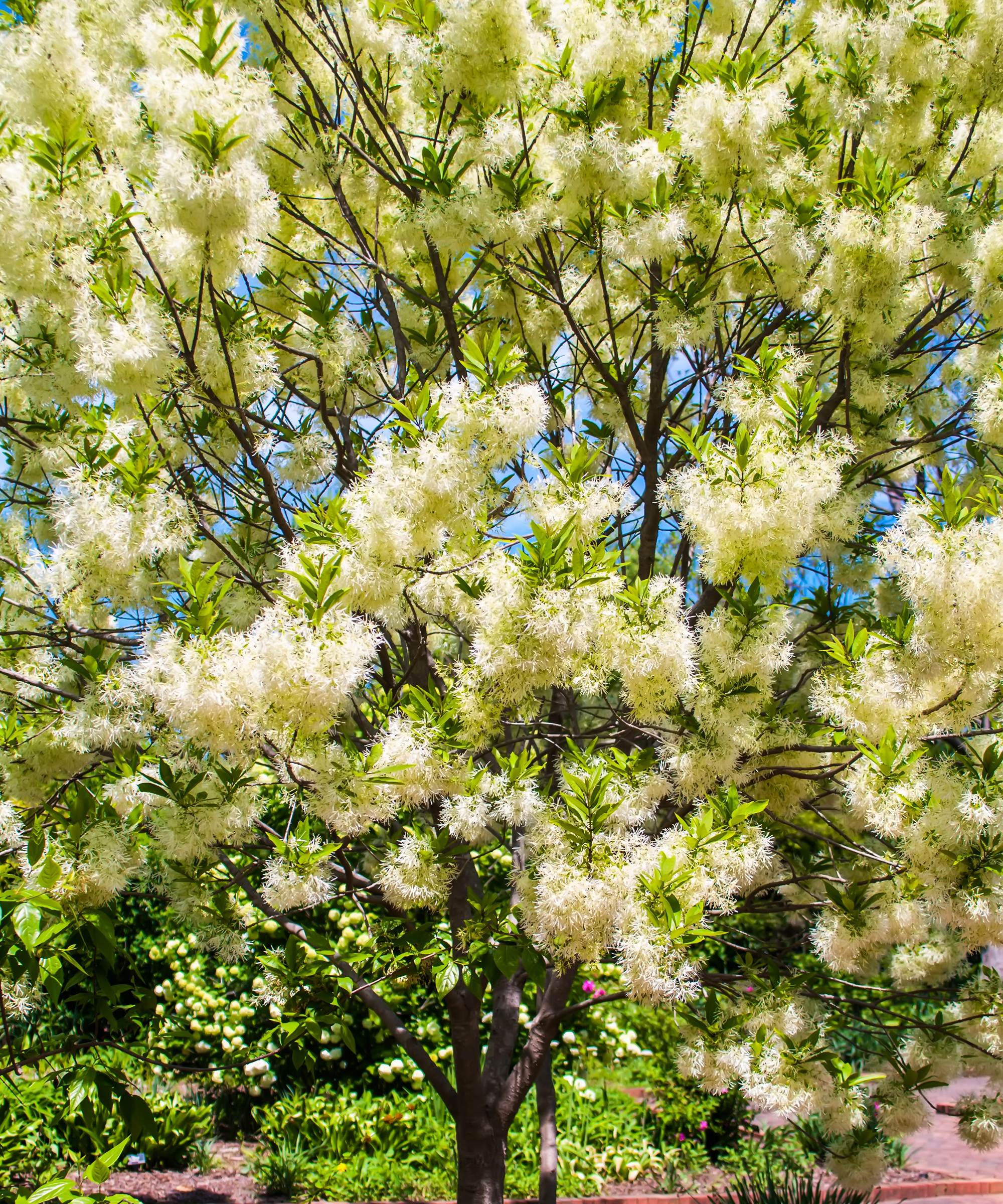
The fringe tree (Chionanthus virginicus) is a pretty eastern North American native that shines with fragrant white flowers in spring and blue fruits in summer. In addition to its spring display, fringe tree provides fall color with yellow foliage. Appropriate for zones 4 through 8, fringe tree only grows to about 20 feet (6m) tall at maturity.
A fringe tree is a great option if you’re looking for a native species that is low maintenance. It has an upright, spreading growth habit that looks nice with minimal pruning or shaping. It grows well even in poor conditions.
5. Crepe Myrtle
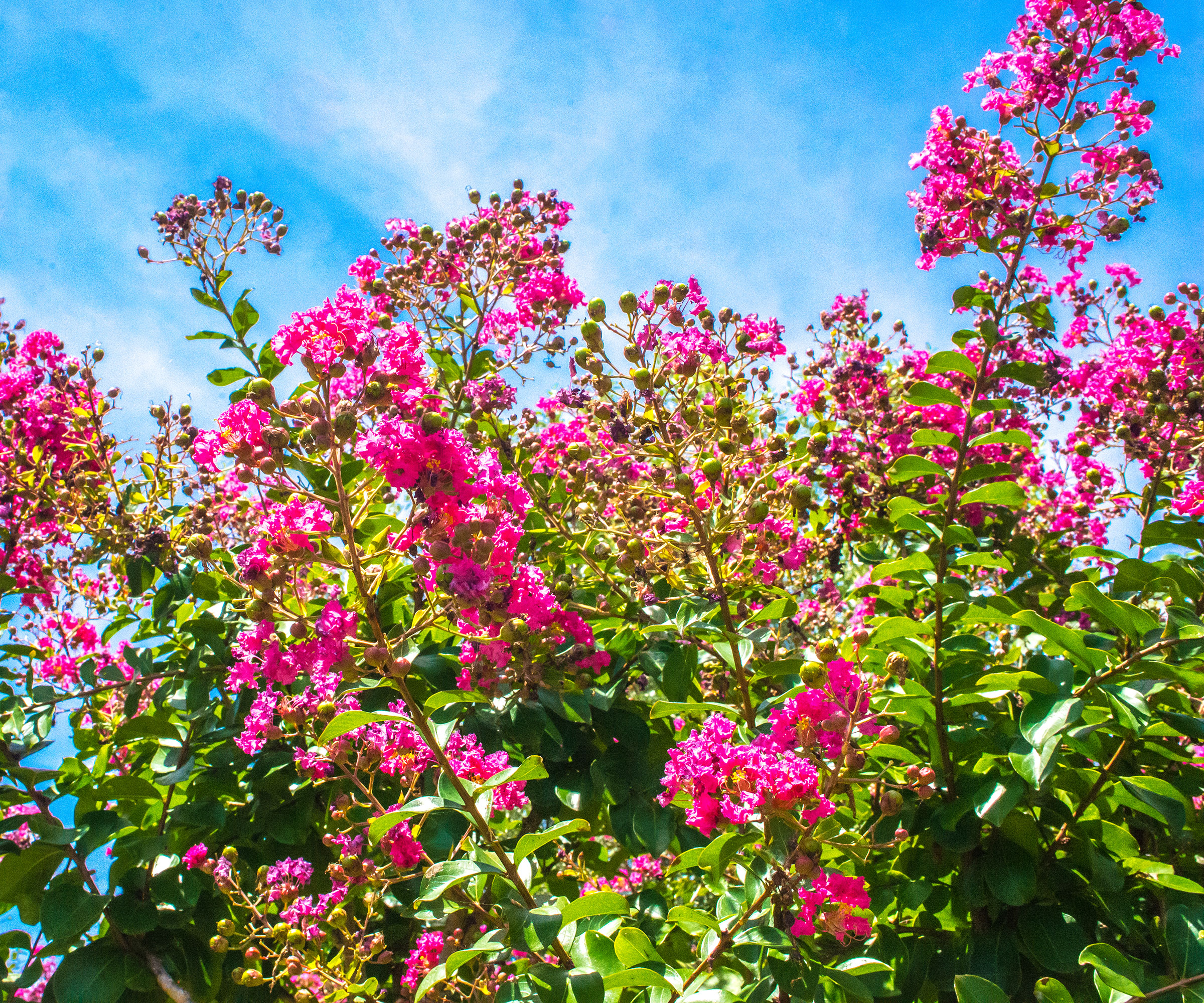
Crepe myrtle (Lagerstroemia indica) is a classic choice for landscaping in southern gardens, suitable for zones 7 to 9. It grows 10 to 20 feet (3-6m) tall and wide with an attractive vase shape. Crepe myrtle blooms in summer and fall with characteristically showy flowers in white, red, pink, or lavender, depending on the variety.
Though known for its flowers, crepe myrtle provides year-round visual interest with fall foliage color and unique exfoliating bark on display in winter. In addition to the standard sizes, you can find dwarf varieties of crepe myrtle for the smallest spaces.
6. Japanese Maple
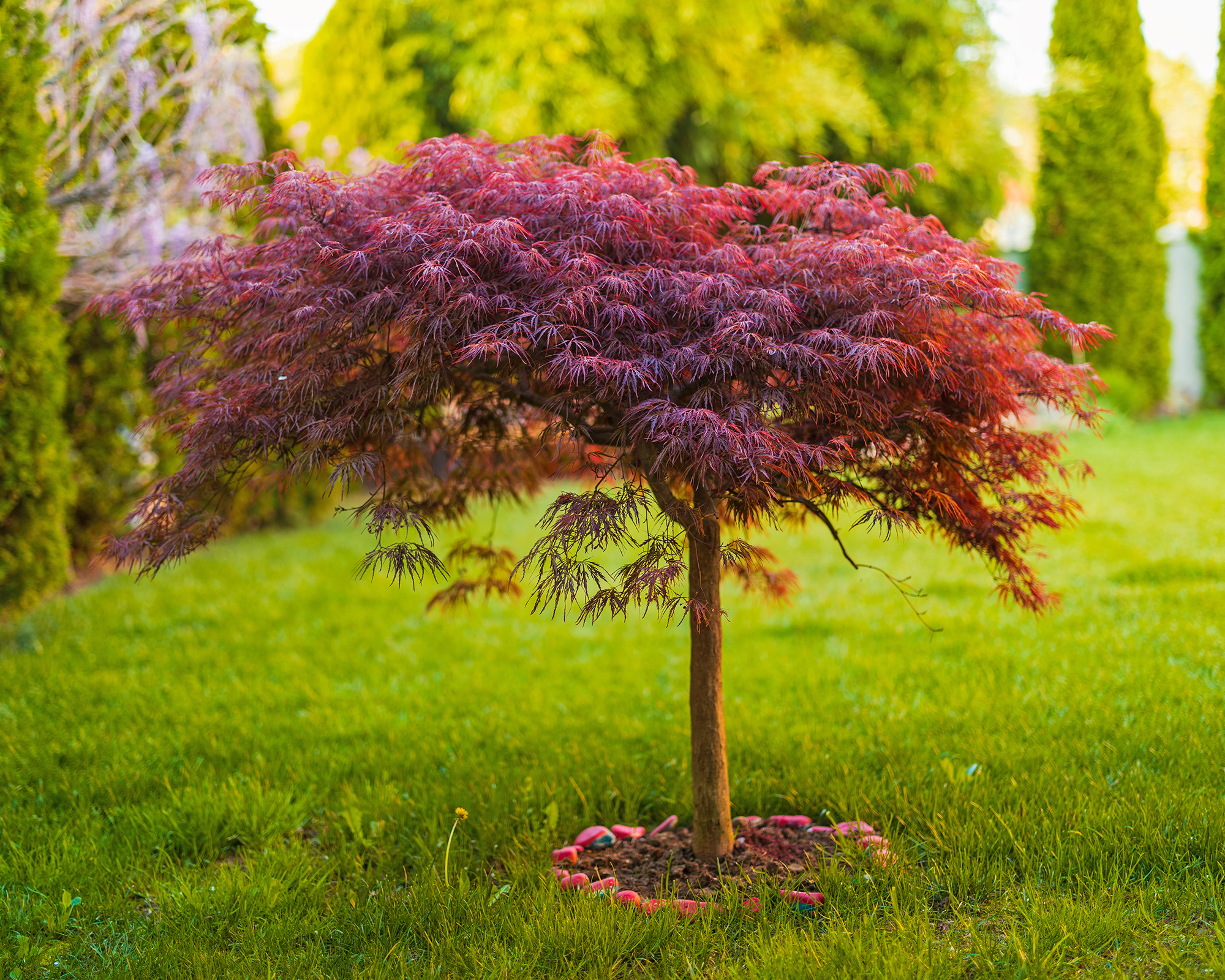
Flowers are not the only option when it comes to showy landscaping trees. Japanese maples (Acer palmatum) are compact trees with striking foliage. The leaves are deeply lobed and produce spectacular fall colors ranging from yellow and orange to red and purple.
Because Japanese maples have become so popular in the landscape, there are many varieties. They come in small to extra small sizes, and different growth habits, including weeping, and various leaf colors. Although not native, Japanese maples are attractive and low-maintenance options for excellent curb appeal.
7. Chaste Tree
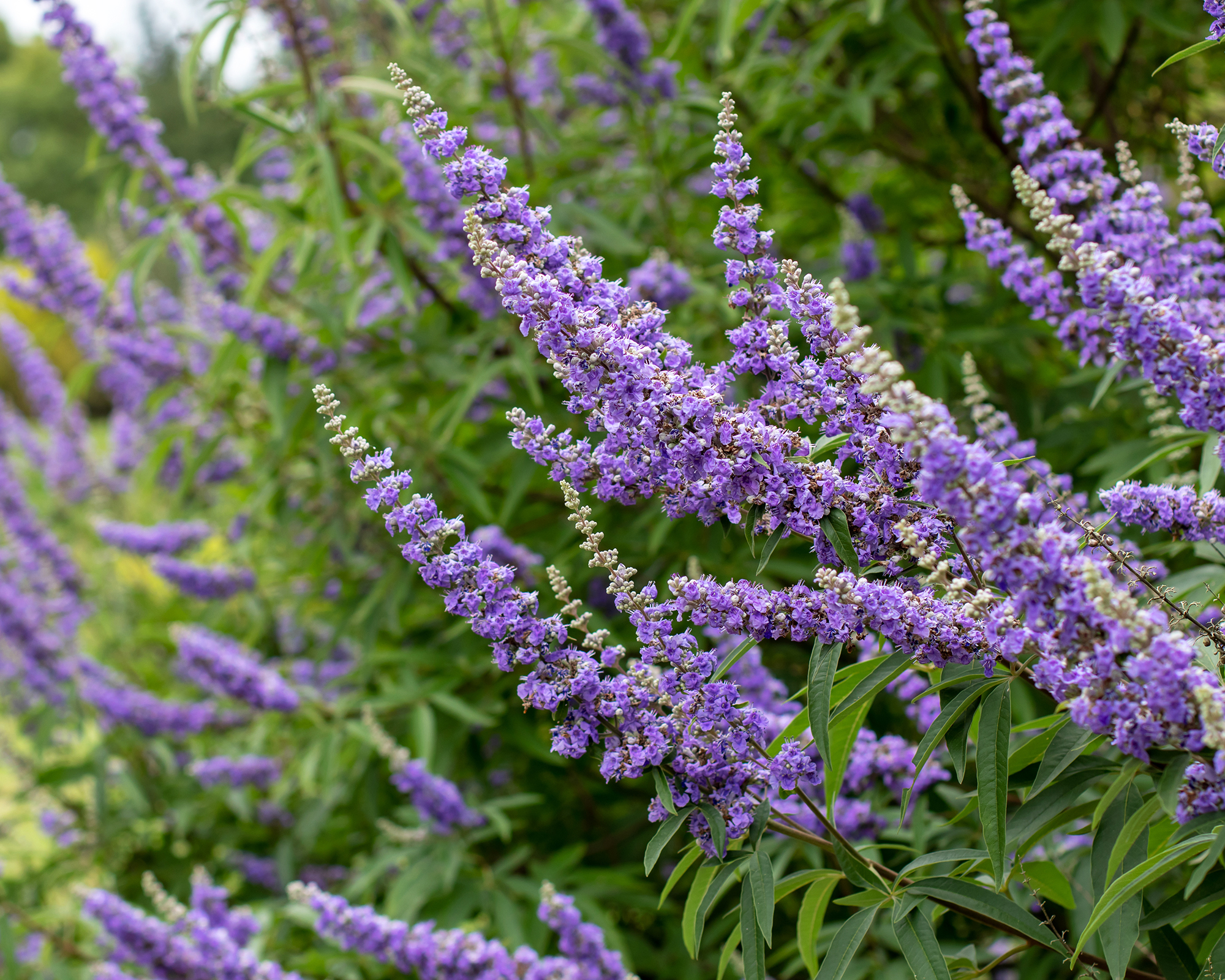
For a drought-tolerant option, choose the chaste tree (Vitex agnus-castus). Unlike many landscaping trees, chaste trees bloom in fall with clusters of small flowers in blue, lavender, or white. This is also a smaller option than many others, growing only up to 10 feet (3m) tall at maturity.
Chaste tree is hardy in zones 6 through 9. It can be trimmed into a tree shape or left shrubbier in shape.
8. Paperbark Maple
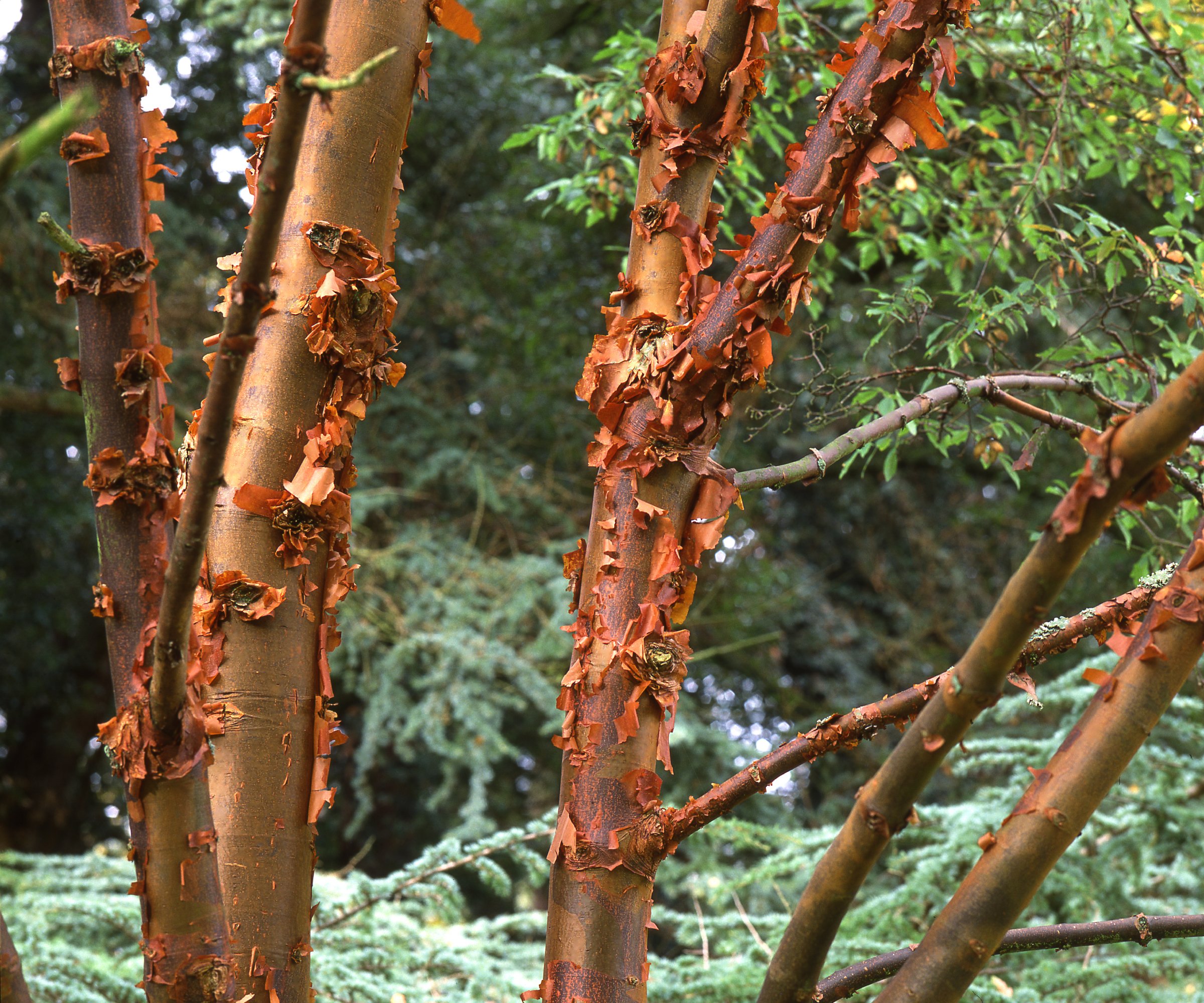
This is another great option for visual interest that doesn’t rely on showy spring flowers. Paperbark maple (Acer griseum) has green leaves that turn reddish yellow in fall and unique bark that provides year-round texture and color. The bark is reddish-brown but peels back to show off a lighter color underneath.
You can grow paperbark maple in zones 5 through 7. It grows slowly but eventually may get as tall as 30 feet (9m), so be sure you have space for it. Smaller than other maples, this type is suitable for smaller yards.
Small landscaping trees in the front yard are excellent additions for curb appeal. Whether you choose a type to showcase its flowers, its leaves, or both, these small trees pack a big punch.

Mary Ellen Ellis has been gardening for over 20 years. With degrees in Chemistry and Biology, Mary Ellen's specialties are flowers, native plants, and herbs.
-
 My Homemade Orchid Fertilizer Always Brings More Blooms – Here's The Easy Recipe That Transforms Plants
My Homemade Orchid Fertilizer Always Brings More Blooms – Here's The Easy Recipe That Transforms PlantsScientist-turned-gardener Mary Ellen Ellis shares her tried-and-tested DIY orchid fertilizer recipe, plus more ingredients to try for healthy, happy plants.
By Mary Ellen Ellis
-
 Looking For Plants To Give You The Soft And Fuzzies? Try These 5 Fuzzy Leaf Plant Options
Looking For Plants To Give You The Soft And Fuzzies? Try These 5 Fuzzy Leaf Plant OptionsLovers of texture, drama, silver foliage and tactile plants will adore these special sensory garden additions. These fuzzy leaf plant options will leave you all aglow
By Susan Albert